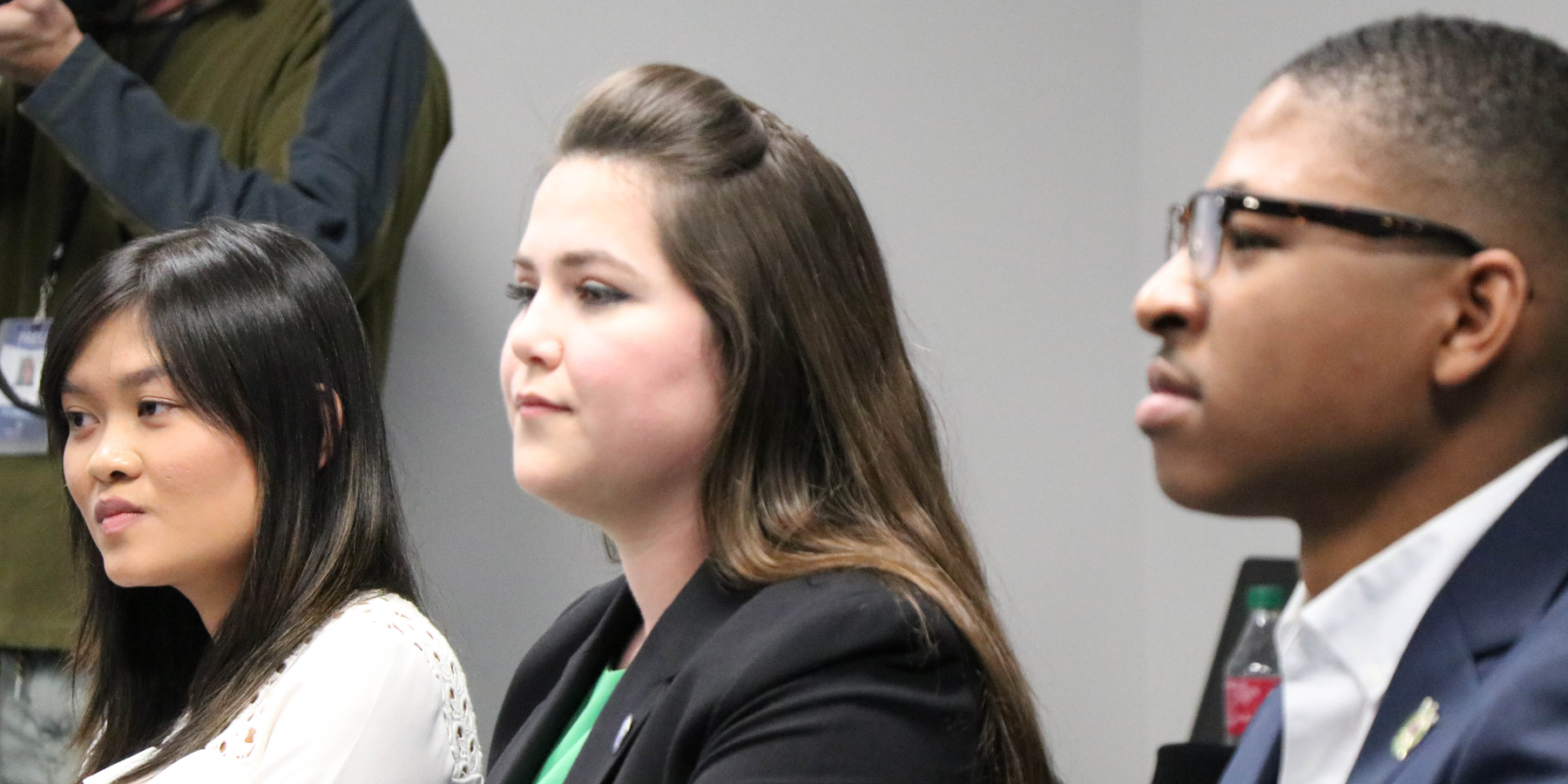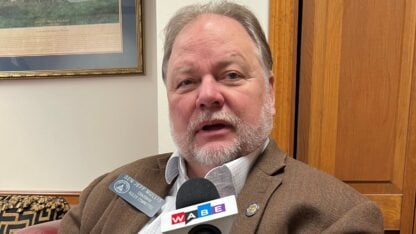Georgia State University has become a model for colleges across the country when it comes to helping students graduate on time. This recognition comes after GSU officials realized in 2003 that plenty of their students were not graduating on time. Just 32 percent were earning diplomas. School officials decided to use data to keep more students on track.
Like us on Facebook
“We used 10 years of data, 2.5 million Georgia State grades, 140,000 student records,” said Tim Renick, GSU’s vice provost and vice president for enrollment management and student success. “What we were doing in the data is looking for academic behaviors in the past that correlated to students dropping and flunking out.”
Those behaviors include failing a quiz, registering for the wrong course, or not earning a high enough grade in an introductory course in the student’s major. Renick said they expected to find a few dozen behaviors.
“We found actually 800 identifiable, academic behaviors that historically Georgia State students perform that correlated in a statistically significant way to them flunking and dropping out of the university,” Renick said.
Now, GSU tracks every undergraduate student for each of those 800 behaviors every day. As soon as a student exhibits one, his or her adviser receives an alert.
“The protocol we have in place is within 48 hours, someone reaches out to the student,” Renick said. “The adviser reaches out and there’s some kind of intervention.”
Staying On Course
When Shequitta Johnson was growing up, her little sister had asthma. Their mother worked at night. So, Johnson had to give her sister breathing treatments.
“I had to just be like, ‘OK, I have to have the knowledge to help her in case she has, like, an asthma attack on me,’” Johnson said.
Johnson is now studying respiratory therapy at Georgia State to help kids like her sister. She’ll graduate in May. She says a big reason she’s graduating on time is because she had good advisers.
“They kept me on track because I wasn’t always aware that I needed to take certain classes at a certain time,” she said.
Advisers are at the heart of GSU’s plan to help more students graduate. The plan is called ‘GPS,’ or Graduation and Progression Success. The similarity to a car navigation system is intentional. University officials said ‘taking a wrong turn’ in college can be like driving a car.
“You go off path,” said Allison Calhoun Brown, GSU’s associate vice president for student success. “You don’t mean to go off-path, but unless somebody says — or you come to understand — ‘Hey, this is the wrong way,’ you can go way off path. [You end up] wasting money, wasting time, wasting credit hours.”
So, about five years ago, the university restructured its advising system. Instead of a yearly meeting with a professor, who doubled as an adviser, officials hired about 60 professional advisers. They opened a new advisement center on two floors of a downtown building. So now, when an adviser gets a student alert through GPS, they can reach out and try to help.
Emily Buis, an adviser, has been at Georgia State for three years. She worked at Georgia Southern University the year before.
“I graduated in 2013,” Buis said. “So, I’m now officially out of college more than I’ve been in college.”
Buis is the kind of person students probably feel comfortable talking to. She’s warm and vivacious, and seems genuinely interested in the well-being of others. Talking to her seems more like conversing with a friend than meeting with a college administrator. As an adviser, Buis helps students stay on track to graduate. When she gets an alert on a student, she calls then in to talk. She mimics a sample conversation:
“I see that you made a ‘C’ in your political science class when you should’ve made a ‘B,’” Buis said. “’Are you interested in political science? What was going on last semester?”
Buis said in-person check-ins give her a fuller understanding of what’s going on with a student, and how she can help.
“Because it’s a computer system, sometimes it doesn’t realize that ‘C plus’ was actually really good because that professor was really difficult,” she said.

Filling In The Gaps
The system seems to be working. Now, Renick says, 76 percent of students who enroll at GSU earn a bachelor’s degree on time from some institution. Also, Georgia State has no achievement gap. That means students from all ethnic groups — white, black, Latino, and Asian students — graduate at roughly the same rate. That’s also true for students from different economic backgrounds.
Mamie Voight, vice president of policy research for the Institute of Higher Education Policy, said that accomplishment sets Georgia State apart.
“They recognize and say that the university has a responsibility to do what they can to close these gaps and to serve students,” she said.
Voight said that’s significant at a university where 60 percent of students are from low-income backgrounds, and 67 percent are non-white.
“They also take responsibility as an institution, and are really driven by the social injustice that these gaps embody,” she said.
Despite their success, GSU officials say their work isn’t over.
“We’re constantly asking, ‘What can we do?’” Brown said. “We can do micro-grants, we can do better academic support.”
The micro-grants are also called Panther Retention Grants. The program lends money to students who need small amounts to cover their tuition. 78 percent of those students graduate within two semesters of receiving the money. Without it, officials say, students might drop out. To strengthen academic support, GSU expanded its peer-tutoring network. It pays students who excelled in a particular class to tutor other students who are struggling.
“We’ve designed all kinds of programs to keep moving the needle, because, hey, these students deserve it,” Brown said.










